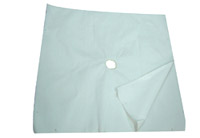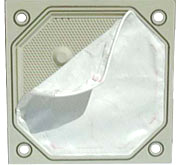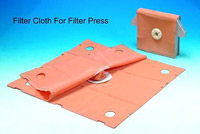

Filter cloth
At present, the most commonly used filter cloth is made of synthetic fiber, including terylene, Vinylon, polypropylene and Kapron etc.
Performances of filter cloth:
|
Properties |
Terylene |
Kapron |
Polypropylene |
Vinylon |
|
Acid resistance |
Strong |
Poor |
Excellent |
not resistant to acid |
|
Alkali resistance |
Resistant to weak alkali |
Excellent |
High |
Resistant to strong alkali |
|
Electrical conductivity |
Very poor |
Fairly good |
Excelletn |
So-so |
|
Elongation at break |
30%-40% |
18%-45% |
Better than terylene |
12%-25% |
|
Recovery property |
Excellent |
90% up recovery rate at 10% longation |
Slightly better than terylene |
Fairly poor |
|
Wear resistance |
Excellent |
Excellent |
Good |
Fairly good |
|
Thermal endurance |
170 °C |
130 °C slight shrink |
90 °C slight shrink |
100 °C shrink |
|
Softening point |
230 -240 °C |
180 °C |
140 -150 °C |
200 °C |
|
M.P. |
255 -265 °C |
210 -215 °C |
165 -170 °C |
220 °C |
| Common types of filter cloth: | ||
 |
 |
|
|
filter cloth housing
|
Embedding type anti-seepage filter cloth
|
|
 |
||
|
Compound filter cloth
|
||
